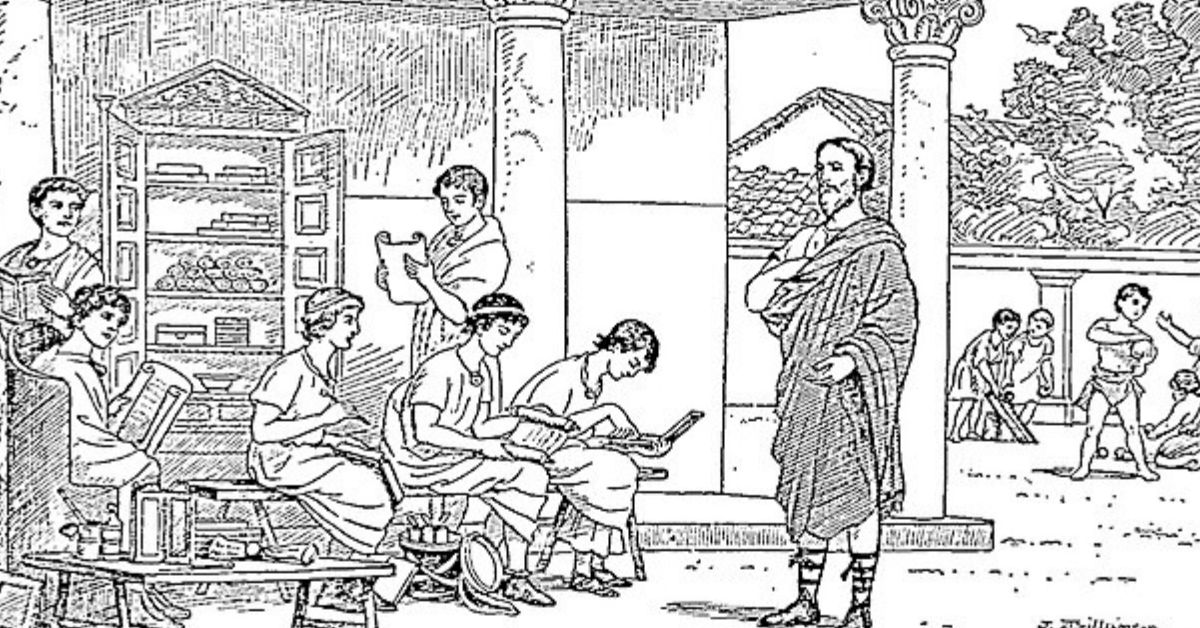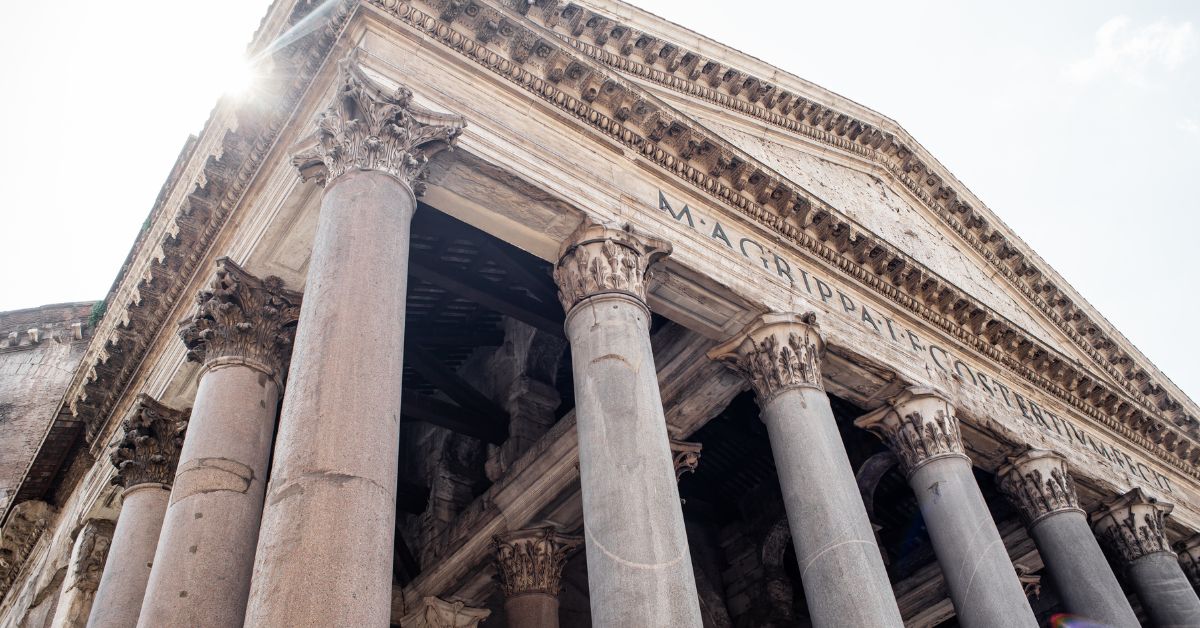“A classical education curriculum? Isn’t that just for elite private schools and snooty academicians obsessed with Latin?” If you’ve ever dismissed classical education as outdated, outmoded, or irrelevant, you might be surprised to discover its growing influence in diverse educational settings—including homeschooling—where the principles of classical education are being embraced by families seeking a robust, holistic, time-tested approach to learning. But what exactly is a classical education curriculum, and why is it making a comeback?
Whether you’re a parent looking for a more enriching educational experience for your student or a student wondering if there’s more to education than standardized tests, join us as we unpack the myths, explore the benefits, and reveal why this ancient approach to learning might just be your key to thriving in the modern world.
First Things First: What Is Classical Education?
Classical education is a time-honored approach to learning that traces its long roots back to ancient Greece and Rome, flourished during the medieval period and was revitalized during the Renaissance. This educational model has shaped the minds of leaders, thinkers, and innovators throughout history. Classical education is about cultivating wisdom, virtue, and the pursuit of truth—all while teaching students how to learn.
Is not the great defect of our education today—a defect traceable through all the disquieting symptoms of trouble that I have mentioned—that although we often succeed in teaching our pupils “subjects,” we fail lamentably on the whole in teaching them how to think: they learn everything, except the art of learning. —Dorothy Sayers, The Lost Tools of Learning
But what does a classical education curriculum actually look like in practice?
The Trivium
At its foundation, classical education is built on the concept of the Trivium (Latin for “three ways”)—a three-part approach to learning in tune with the way a child naturally learns:
- Grammar: This is where children absorb facts, lay the groundwork for language skills, and build a robust knowledge base across subjects.
- Dialectic: Here, students learn to question, analyze, and understand the relationships between facts they’ve learned.
- Rhetoric: In this final portion, students learn to articulate their thoughts clearly, persuasively, and eloquently.
(These correspond with Classical Conversations’ Foundations, Essentials, and Challenge programs, respectively.)

The Quadrivium
This framework, refined during the Middle Ages, was complemented by the Quadrivium (which consists of arithmetic, geometry, music, and astronomy), forming the seven liberal arts that were the cornerstone of medieval education.

The Great Books
Beyond these foundational elements, classical education emphasizes engagement with the Great Books of Western civilization, from ancient classics to medieval theological works and Renaissance literature—as well as great modern books! This approach fosters cultural literacy and a deep understanding of the ideas that have shaped our world. It often includes the study of Latin and Greek, not just as languages, but as gateways to understanding the roots of much of our modern vocabulary and thought. (And in case you were wondering—Classical Conversations focuses on Latin for a number of reasons.)
Until lately the West has regarded it as self-evident that the road to education lay through great books. No man was educated unless he was acquainted with the masterpieces of his tradition. There never was very much doubt in anybody’s mind about which the masterpieces were. They were the books that had endured and that the common voice of mankind called the finest creations, in writing, of the Western mind. — Robert Maynard Hutchins, The Great Conversation
The Socratic Method
Importantly, classical education isn’t just about what is taught, but how it’s taught.
The Socratic method of questioning and dialogue, revived during the Renaissance, is often employed, encouraging logical thinking and deep engagement with ideas. This approach aligns well with the Christian tradition of seeking understanding through thoughtful inquiry.
In essence, a classical education curriculum aims to produce not just knowledgeable students, but wise individuals equipped with the tools to learn, think, and communicate effectively throughout their lives. It’s an approach that values the cultivation of character alongside academic achievement, preparing students not just for a career, but for a life well-lived.
Key Elements of a Classical Education Curriculum
While classical education can vary in its specifics, there are several key elements that define a robust classical education curriculum:
1. Great Books and the Western Canon
Classical education places a strong emphasis on reading and analyzing seminal works that have shaped Western civilization. This includes everything from ancient texts to Shakespeare to influential modern works. By engaging with these texts, students develop critical thinking skills and gain a deeper understanding of the ideas that have shaped our world.
2. Latin (and sometimes Greek)
Latin is a cornerstone of many classical education programs (including Classical Conversations!). Latin provides a foundation for understanding language structure, enhances vocabulary, and opens doors to original texts in history, science, and philosophy. Learn more about why we emphasize Latin in our curriculum.
3. Socratic Method
Named after the ancient Greek philosopher Socrates, this method involves asking probing questions to stimulate critical thinking and illuminate ideas. It encourages students to think deeply, articulate their positions, and consider multiple perspectives.
4. Cultural Literacy
Classical education aims to provide students with a broad base of cultural knowledge. This includes familiarity with important historical events, scientific discoveries, artistic movements, and philosophical concepts that have shaped our society.
5. Writing and Rhetoric
Building upon a foundation of memorization and clear and logical thinking, students learn to articulate their thoughts clearly and persuasively. This includes learning the art of debate, essay writing, and public speaking.
6. Integrated Subjects
Rather than teaching subjects in isolation, classical education takes an integrated approach. For example, a lesson on ancient Rome might incorporate elements of history, literature, art, and philosophy.
7. Character Formation
Classical education places a high value on moral and character development. Virtues such as wisdom, justice, courage, and temperance are often discussed and encouraged through the curriculum.
8. Appreciation of Truth, Goodness, and Beauty
These three transcendentals from classical philosophy are woven throughout the curriculum, encouraging students to recognize and appreciate them in literature, art, and human actions.
God is the all-fair. Truth, and goodness, and beauty, are but different faces of the same All. —Ralph Waldo Emerson, Nature
By including these elements, a classical education curriculum aims to produce well-rounded individuals who can think critically, communicate effectively, and engage meaningfully with the world around them.
Benefits of Classical Education
Classical education offers numerous advantages that prepare students not just for academic success, but for life. Here are some of the key benefits:
1. Intellectual Curiosity and Love of Learning
Classical education nurtures a genuine love for learning that extends beyond the classroom. Students are encouraged to ask questions, explore ideas, and develop a lifelong passion for knowledge.
2. Critical Thinking Skills
The emphasis on logic, analysis, and the Socratic method develops students’ ability to think deeply and critically about complex issues. This skill is invaluable in all aspects of life, from personal decision-making to professional problem-solving.
3. Strong Communication Abilities
Through the study of rhetoric, debate, and great literature, students learn to express themselves clearly and persuasively in both written and oral forms. This proficiency in communication is a significant advantage in higher education and future careers.
4. Character Development
The focus on virtue and moral philosophy helps students develop strong character and ethical decision-making skills. This moral grounding is crucial for personal integrity and leadership.
5. Cultural Literacy and Historical Perspective
By engaging with seminal texts and ideas throughout history, students gain a rich understanding of our cultural heritage. This knowledge provides context for current events and fosters a more nuanced worldview.
6. Improved Language Skills
The study of Latin enhances understanding of English grammar, expands vocabulary, and makes learning other languages easier.
7. Integrated Knowledge Base
The interdisciplinary approach of classical education helps students see connections between different subjects, leading to a more comprehensive and applicable understanding of the world.
8. Development of Self-Discipline and Study Skills
The structured approach and high expectations of classical education foster self-discipline and effective study habits that serve students well throughout their lives.
9. College and Career Readiness
Unlike modern education, classical education is not primarily about its utility in the workforce. Having said that, the rigorous nature of classical education prepares students exceptionally well for the challenges of higher education and the workplace. Many classical education students find they excel in college-level work.
10. Appreciation for Beauty and Excellence
Exposure to great art, literature, and ideas cultivates an appreciation for beauty and excellence, enriching students’ lives and encouraging them to strive for quality in their own work.
The perception of beauty is a moral test. –Henry David Thoreau, Journal
Through these benefits, classical education equips students with the tools they need to think clearly, communicate effectively, and lead purposeful lives. This educational approach goes beyond mere academic achievement to foster wisdom, virtue, and a deep engagement with the world.
Boring? Hardly. Useless? Nope! Debunking Classical Education Curriculum Myths
While classical education has experienced a renaissance in recent years, it’s not without its skeptics. Let’s address some common misconceptions:
Myth 1: “Classical education is outdated and irrelevant in the modern world.”
Reality: Classical education teaches timeless skills like critical thinking, effective communication, and logical reasoning—useful for everyone in every walk of life, and, as an added bonus, highly valued in today’s rapidly changing job market. This model of education provides a strong foundation for understanding anything and adapting to everything.
Myth 2: “Classical education is all about memorization and rote learning.”
Reality: While memorization plays a role (especially in the grammar stage)—because who doesn’t need a strong memory?—classical education emphasizes understanding, analysis, and application of knowledge. The dialectic and rhetoric stages focus on critical thinking and persuasive communication.
Myth 3: “Classical education is only for gifted students or elite private schools.”
Reality: Classical education can benefit students of all abilities and backgrounds. Its structured approach helps struggling students build a strong foundation while challenging advanced learners to dive deeper into subjects.
Myth 4: “Classical education neglects science and technology.”
Reality: Fun fact: Another name for “Dialectic” is “Logic.” Classical education provides a strong foundation in scientific thinking. Many classical homeschoolers incorporate modern technology and advanced science courses into their curricula. Of course, technologies come and go. An education in computer-aided design is outdated before a textbook can be published. A classical education teaches students to think well so that they are prepared for any domain of knowledge, including science and technology. (We recommend a strong stick-in-the-sand foundation ourselves—but take one look at CC Connected, and you’ll see that Classical Conversations is anything but technophobic).
Myth 5: “Classical education is too Western-centric.”
Reality: While it does focus on Western civilization, classical education teaches students how to think, not what to think. These skills can be applied to understanding and appreciating all cultures and perspectives. Of course, the importance of studying Western civilization cannot be understated. The church flourished as Western civilization grew; in studying Western civilization, we are also studying the history of Christian thought.
Myth 6: “Latin is a dead language. Why waste time on it?”
Reality: Learning Latin improves understanding of English grammar, expands vocabulary, and makes learning other languages easier. It also provides direct access to important historical and scientific texts. But above all—Latin is beautiful.
Learning Latin affords us the special gratification of experiencing this complexity, which is ultimately part of one of the highest ambitions of being human: achieving linguistic beauty. —Nicola Gardini, Long Live Latin
By addressing these myths, we hope to show that classical education is a vibrant, relevant, and accessible approach to learning. This model of education equips students with the tools they need to become lifelong learners, critical thinkers, and engaged citizens in our complex world.
From Theory to Practice: Dorothy Sayers and Leigh Bortins
The modern revival of classical education owes much to two remarkable women: Dorothy Sayers and Leigh Bortins. Their work, separated by many decades but united in purpose, has shaped the landscape of classical education, particularly in the homeschooling community.
Dorothy Sayers: Rediscovering the Lost Tools of Learning
In 1947, British writer and scholar Dorothy Sayers presented her seminal speech delivered during the vacation term at Oxford, “The Lost Tools of Learning.” In this work, Sayers argued that modern education had lost sight of the fundamental skills that enable effective learning. She proposed a return to the classical trivium—Grammar, Logic, and Rhetoric—as a means to equip students not just with knowledge but with the tools (or skills) to acquire and analyze knowledge throughout their lives.
Sayers’ essay sparked a renewed interest in classical education methods, laying the groundwork for a movement that would gain momentum in the following decades.
You can read more about Dorothy Sayers and download her essay in our blog post, “The Lost Tools of Learning: From Dorothy Sayers to Leigh Bortins.”
Leigh Bortins: Creating a Comprehensive Classical Education Curriculum
Fast forward to the late 20th century, where we find Leigh Bortins, an aerospace engineer turned educator, who would take Sayers’ ideas and transform them into a practical model for homeschoolers.
Leigh’s journey into classical education began with a personal quest. Despite her technical background, she found that when it came to reading great works of literature or historical texts with her children, something was missing. As she describes it, “Our whole family could easily read the words, but none of us could fathom the meaning because we did not have the context for what was being said” (The Core: Teaching Your Child the Foundations of Classical Education, page 1).
This realization led Leigh to explore the classical model of education. Inspired by Sayers’ work and driven by a desire to provide a more comprehensive education for her four sons, Leigh began to implement classical methods in her homeschooling approach.
In 1997, Leigh founded Classical Conversations, a network of communities that use the classical model to teach at home. Her vision was to empower parents to provide their children with a rigorous education that emphasizes the development of critical thinking skills and a deep engagement with great ideas.
Leigh’s approach, which you can find in her books The Core, The Question, and The Conversation, explores the classical trivium from a parent’s perspective. She has developed a complete K-12 curriculum that brings the principles of classical education into the home, making it accessible and practical for modern families.
The Collective Impact: A Renaissance in Classical Education
The work of visionaries like Dorothy Sayers and Leigh Bortins has been instrumental in sparking a renaissance in classical education, but they are part of a larger movement that includes many dedicated educators, scholars, and parents.
In the latter half of the 20th century and into the 21st, numerous individuals and organizations have contributed to the resurgence of classical education. These pioneers have worked to translate the theoretical framework of classical education into practical, day-to-day teaching strategies.
Their collective efforts have:
- revitalized interest in the classical trivium and quadrivium
- led to the development of modern curricula based on classical principles
- trained a new generation of classical educators
- created supportive communities for families pursuing classical education
- demonstrated the effectiveness of classical methods in preparing students for higher education and beyond
As a result of these combined efforts, classical education has found new life in the 21st century, accessible to families from all walks of life, whether through homeschooling, co-ops, charter schools, or traditional private schools.
This renaissance in classical education offers families a time-tested approach to learning that prepares children not just for academic success, but for a lifetime of intellectual curiosity and engagement with the great conversations of humanity.
Timeless Wisdom for Modern Minds
As we’ve explored throughout this article, classical education is far more than a relic of the past—it’s a dynamic and adaptable approach to learning that equips students with timeless skills for navigating an ever-changing world.
From its roots in ancient civilizations to its revival led by pioneers like Dorothy Sayers and Leigh Bortins, classical education has consistently demonstrated its power to cultivate not just knowledgeable students but wise, articulate, and morally grounded persons.
The classical model, with its emphasis on the Trivium of grammar, logic, and rhetoric, provides a framework for lifelong learning. It teaches students how to think critically, communicate effectively, and engage meaningfully with the great ideas that have shaped our world.
Through its integrated approach to subjects, focus on character development, and exposure to enduring works of literature and philosophy, classical education offers a rich, comprehensive learning experience. In the words of Leigh Bortins, classical education allows us to “hear a deeper, more confident voice and can respond in kind” (The Core, page 2). This model of education prepares students not just for future academics or careers but for the pursuit of truth, goodness, and beauty—and above all, to know God and to make him known.
So, whether you’re a parent considering educational options, an educator looking to enhance your teaching, or simply someone interested in the power of learning, we encourage you to explore the world of classical education. Classical education promises not just knowledge, but wisdom; not just skills, but understanding; not just success, but a life well-lived.





